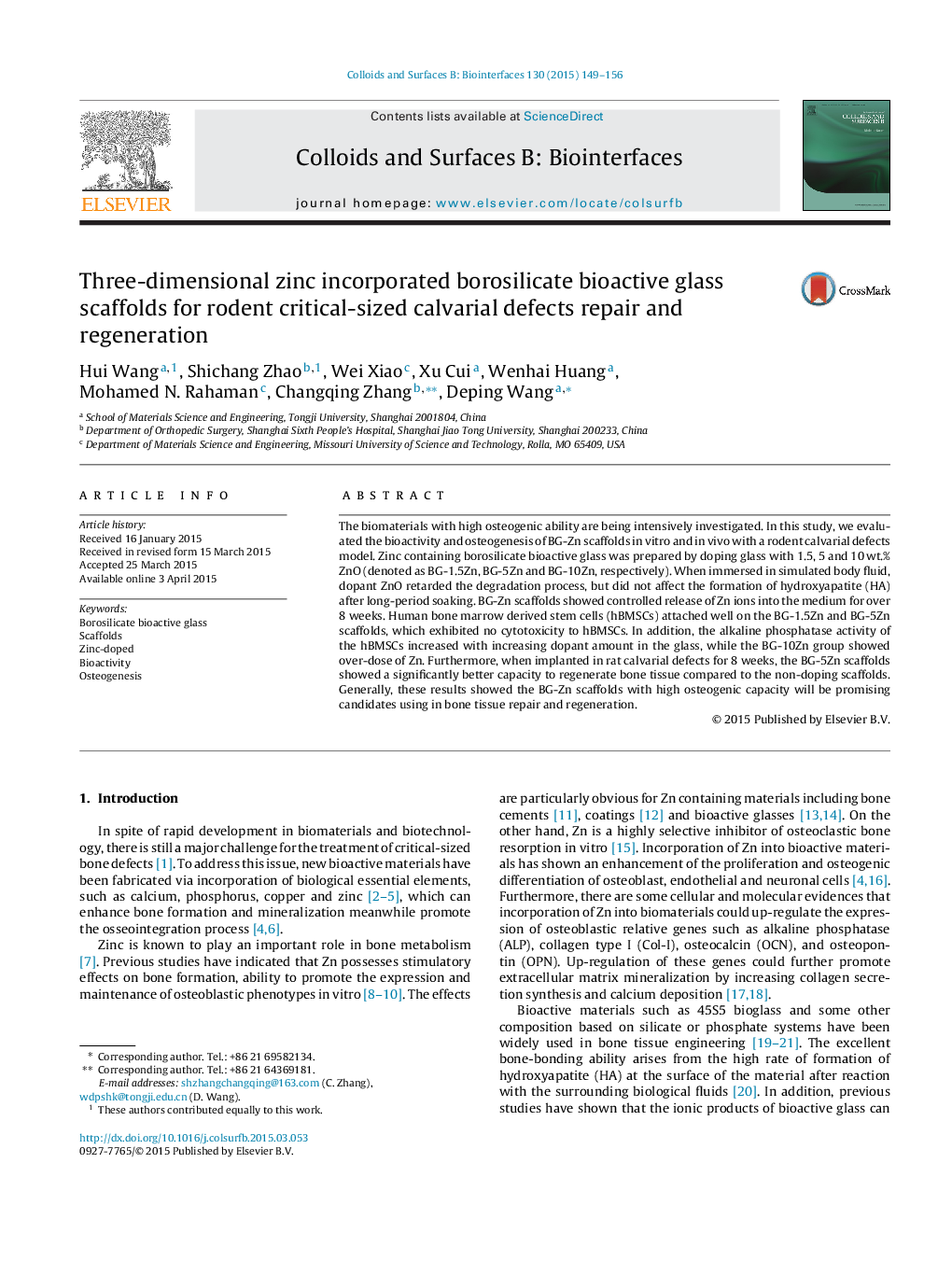| Article ID | Journal | Published Year | Pages | File Type |
|---|---|---|---|---|
| 599330 | Colloids and Surfaces B: Biointerfaces | 2015 | 8 Pages |
•BG-Zn scaffolds showed a controlled release of Zn ions.•Significant increase of cell proliferation and ALP activity of hBMSCs was found in BG-5Zn group.•BG-5Zn scaffolds showed a significantly better ostogenesis when implanted in rat calvarial defects.
The biomaterials with high osteogenic ability are being intensively investigated. In this study, we evaluated the bioactivity and osteogenesis of BG-Zn scaffolds in vitro and in vivo with a rodent calvarial defects model. Zinc containing borosilicate bioactive glass was prepared by doping glass with 1.5, 5 and 10 wt.% ZnO (denoted as BG-1.5Zn, BG-5Zn and BG-10Zn, respectively). When immersed in simulated body fluid, dopant ZnO retarded the degradation process, but did not affect the formation of hydroxyapatite (HA) after long-period soaking. BG-Zn scaffolds showed controlled release of Zn ions into the medium for over 8 weeks. Human bone marrow derived stem cells (hBMSCs) attached well on the BG-1.5Zn and BG-5Zn scaffolds, which exhibited no cytotoxicity to hBMSCs. In addition, the alkaline phosphatase activity of the hBMSCs increased with increasing dopant amount in the glass, while the BG-10Zn group showed over-dose of Zn. Furthermore, when implanted in rat calvarial defects for 8 weeks, the BG-5Zn scaffolds showed a significantly better capacity to regenerate bone tissue compared to the non-doping scaffolds. Generally, these results showed the BG-Zn scaffolds with high osteogenic capacity will be promising candidates using in bone tissue repair and regeneration.
Graphical abstractZn-doped borosilicate bioactive glass scaffolds with high osteogenic capacity represent a promising candidate for their use in bone tissue repair and regeneration.Figure optionsDownload full-size imageDownload as PowerPoint slide
